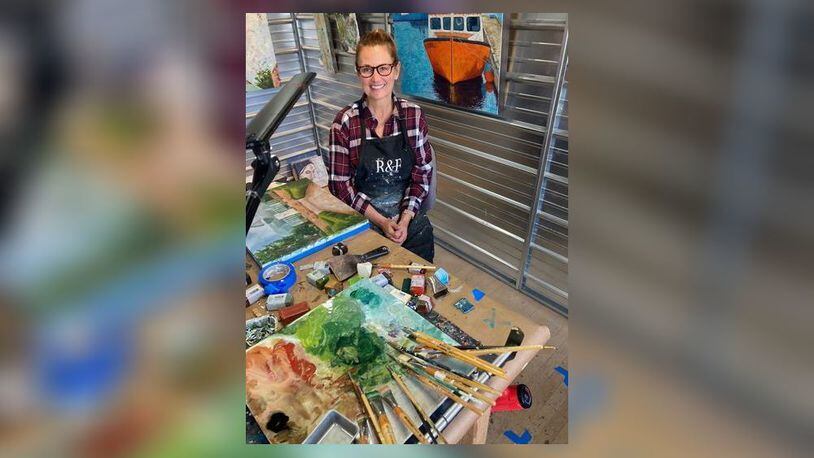But 15 years ago, when the Springfield woman first laid eyes on an abstract encaustic painting during a chance visit to Mount Vernon Nazarene College, she felt again the tug that artists have felt from time immemorial.
“There was a piece of encaustic on the wall that blew me away,” she said.
“I was drawn to the texture of it.”.
“From then on, I just started investigating it. I was buying books. I bought some wax and melted and just kind of played around with it” – just as she had played her way to fashioning a Coke bottle, masking tape and shoe polish into art as a child.
McDorman’s space in Springfield’s Hatch Artist Studio now is filled with bright pigments of a child’s play space. There is a palette with a heat source that keeps her brushes and paints from hardening. More importantly, the room is inhabited by a 54-year-old artist wholly committed to her medium.
“What I like about the wax -- it doesn’t dry, it hardens,” she said. “I don’t have to wait for it to dry, I’m ready to go.”
Wait-time was an issue for her in the oil painting she had been doing.
“I’m impatient, and I would always overwork it, always muck it up.”
With encaustic paints, “you’re doing layer on top of layer.”
In some way it’s like building. In others, it’s like sculpting.
“As soon as you add things to wax, it moves” and “every layer you have to fuse it” so the layers adhere. Because of that, “you need a solid surface” more like rigid board than a canvas.
And heat sources.
“In abstracts, I’ll use a torch a lot,” McDorman said.
Under high heat, the melting wax “starts to move, starts to flow, and kind of develops itself,” she explained.
Representative art often requires a different tool.
“When you’re trying to keep a line straight, you keep your heat gun on the lowest stetting. You’re heating much slower, much controlled, more time, more patience. And as hard as it is to keep the lines straight, I like the challenge of it.”
Working with the wax calls for more than brushes.
“I have many scrapers I’ve tried, and you can tend to take off too much wax.”
She relies on razor blades for finer control.
They also produce shavings of wax that she collects for future use.
“A lot of times, when I start into a new piece, I’ll just thrown them down on the first layer, anticipating the “nice surprises” when the base colors are revealed as upper layers of wax and pigment are shaved away.”
McDorman got a nice surprise of another sort six years ago when, at a time when encaustic workshops were few and far between, she managed to get wait-listed for one taught by her favorite artist in the field, Dale Roberts.
When a cancellation got her in at the last minute, the approach of an impending hurricane named Maria didn’t stop her from hopping in car and heading east with the thought that “if it gets too bad, I’ll turn around.”
As things turned out, it got just bad enough.
When she made it to Kingston, “half the class didn’t show up” and she got twice as much out of the workshop.
Now, six years later, “I feel like I found my medium” she said. “I haven’t been bored with it yet; it constantly amazes me; and I feel like every time I do something, I learn something new” -- just as others can learn from the larger arc of McDorman’s story.
Her drift away from art began when plans for a future in fashion design stalled after taking college classes. “I didn’t care for it.”
Life then took over, with work, marriage and children.
Helping with art classes for her then first-grader “kind of sparked that interest again,” she said. And she “got back into oils because I liked working with the textures.”
Then came that day she tagged along with a friend on a daughter’s college visit.
Her story proves that interrupted dreams can come true.
And likely have for all kinds of people for as long as encaustic paintings have been around.
About the Author
